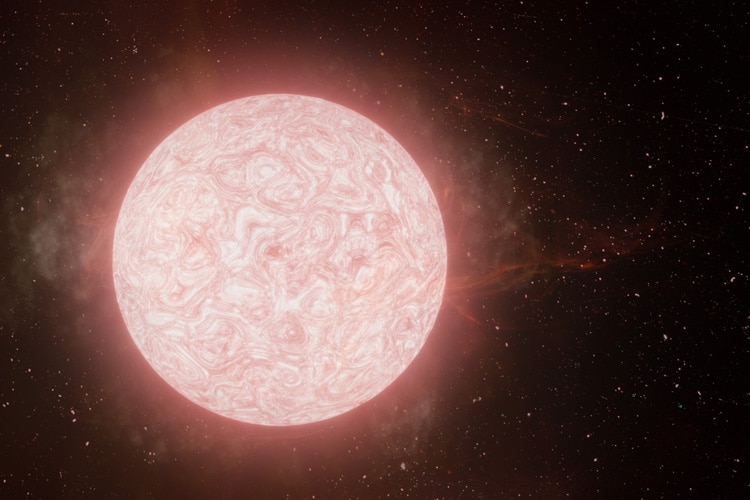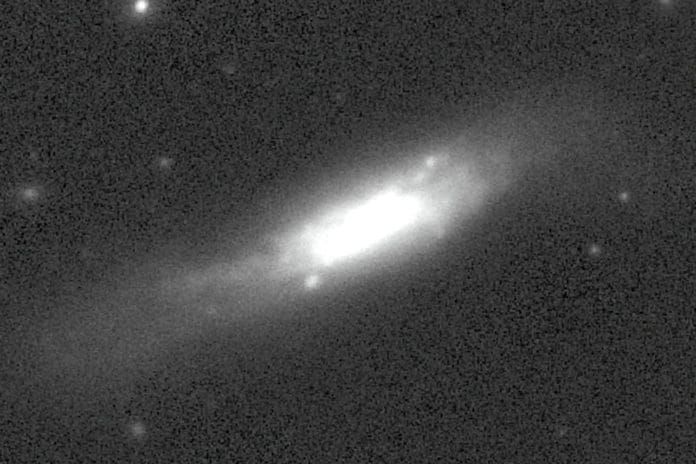Red supergiants evolve from large main-sequence stars. These stars hiccup several times and then explode in a classic supernova visible across the universe. However, astronomers had never observed this scenario until now.
Using observations from numerous ground- and space-based telescopes, astronomers had recorded such a sequence for a star before it collapsed and exploded. The star is located about 120 million light-years from Earth and about ten times the sun’s mass.
Senior author Raffaella Margutti, associate professor of astronomy and physics at UC Berkeley, said, “It’s like watching a ticking time bomb. We’ve never confirmed such violent activity in a dying red supergiant star, where we see it produce such a luminous emission, then collapse and combust, until now.”
On Sept. 6, 2020, the light from the explosion likely reached Earth for the first time. Astronomers were only alerted to the supernova, SN 2020tlf, on Sept. 16. Teams around the world quickly started observing it in many wavelengths, from X-ray to radio, using a variety of telescopes.
The W. M. Keck Observatory atop Maunakea, the largest volcano on the island of Hawaiʻi, was the first to obtain a spectrum of the explosion. But, astronomers used other multiwavelength observations to analyze the explosion.
They later matched a Type II supernova with a red supergiant star that had been observed to brighten rapidly a few months earlier by Pan-STARRS.
The increased brightness before the final months of the star explosion suggests that these red supergiants undergo significant changes in their internal structure that result in the tumultuous ejection of gas.
Scientists estimated that the red supergiant star had bloated to a size that, in our solar system, would reach the orbit of Jupiter.
UC Berkeley graduate student and lead author Wynn Jacobson-Galán said, “This is a breakthrough in our understanding of what massive stars do moments before they die. In an ordinary Type II supernova, the direct detection of pre-supernova activity in a red supergiant star has never been observed before. For the first time, we watched a red supergiant star explode.”
Scientists expect to detect more such pre-explosion outbursts using new and more powerful telescopes.
Scientists noted, “Before the star’s ultimate explosion, the gaseous material it expelled — which may have contained as much as one-tenth the mass of the red supergiant — could have come from nuclear reactions inside the star that occurred after it exhausted all of its initial hydrogen and helium fuel.”

“Stars fuse lighter elements into heavier elements, generating energy, but at late stages, the energy from fusion tapers off and eventually stops, allowing the stars to collapse onto themselves because of gravity.”
Scientists also modeled nuclear reactions inside such massive stars. The model suggests that sudden flashes of neon and oxygen fusion could generate gravitational waves that blow off some of the outer regions of the star.
The discovery means that transient surveys like YSE can hunt for luminous radiation from red supergiants. It can help gather more evidence that such behavior could signal the imminent supernova demise of a massive star.
Jacobson-Galán said, “I am most excited by all of the new unknowns that this discovery has unlocked. Detecting more events like SN 2020tlf will dramatically impact how we define the final months of stellar evolution, uniting observers and theorists in the quest to solve the mystery of how massive stars spend the final moments of their lives.”
Journal Reference:
- W. V. Jacobson-Galán et al. Final Moments. I. Precursor Emission, Envelope Inflation, and Enhanced Mass Loss Preceding the Luminous Type II Supernova 2020tlf. DOI: 10.3847/1538-4357/ac3f3a
